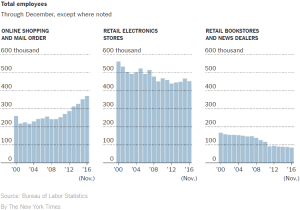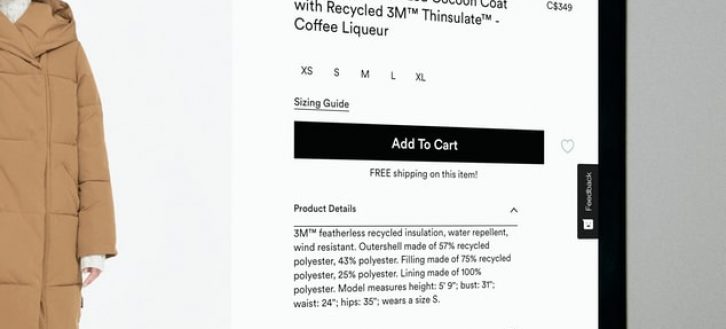Korea
First of all, Korea has the world’s highest online shopping rate (of course). Even groceries can be bought online and delivered home. A common sight in the subway now are elderly Korean men, carrying shopping bags to consumers home. (As they don’t have to pay for public transportation.)

As a matter of fact, buying stuff online has been growing 22% yearly. Almost half of purchases are done on a mobile device. Why? Because it is convenient, prices are competitive and there is a wider range of products. Korea has been making its WiFi faster. The products bought? Tour packages, reservation services, clothing and daily goods are most popular. Other things that are offered on the web are: food delivery, online novels / e-books and insurances. Chinese people like to order Korean made cosmetics.The online shopping rate hit record levels in May, October, November and December in 2016. Holidays (Chinese) and promotions helped boost sales.
However, competition is fierce and many major web retailers (or social commerce companies) face losses and other challenges. Those are: Coupang (partially owned by Softbank), Ticket Monster (NHN), WeMakePrice (Nexon) and 11st Street (SK). Gmarket (eBay) managed to earn a profit last year. Follow the link for the full list of Korea’s most popular online shopping websites.
Shopping online in Korea has the following features and some of recent (O2O) developments are:
- Sometimes via chat app Kakao, companies like 11st and Naver are experimenting with chatbots for customer service and convenience.
- When you order, you can choose to pick up your parcels at the nearest convenience store. (In Seoul, at almost every street corner there is a GS25, CU or 7-Eleven).
- Kakao and KT (mobile network operator) started online banks. Existing banks are becoming more mobile friendly. (Other fintech news is that local Toss is an award winning money transfer app.)
- Naver boosts mobile shopping with its payment application Naver Pay.
Worldwide
Buying goods online has grown substantially the past years, with people now also purchasing from retailers on mobile devices. Especially traditional bricks-and-mortar shops are feeling the pressure from Amazon. Even though Amazon is hiring 100,000 workers (it has now more than 300,000 workers globally), old fashioned bookstores are laying off more and more people. Why is that? Shopping online can be cheaper, convenient and fast. Also, a shop on the Internet usually has $1,267,000 in sales per employee versus $279,000 at traditional stores.

Besides old bookstores, package delivery company UPS too is finding it hard to compete with Amazon. It says e-commerce related costs are rising, hurting profit margins. In China, couriers often face poor labour conditions.
Without a doubt, buying on the web is big and here to stay. According to iProspect, in 41% more people clicked on shopping ads (Q4 2016). The majority of those clicks came from mobile devices. Then how to make the most of it? To maximize conversions, a commercial site should have an online store above the fold (the top part of a webpage), have a large amount of internal links and bullet points for a clear structure. All these are signs of convenience and user friendliness. Also, pointing out your uniqueness can help growing as a small online retailer.





If Korean people shop on Social Media (like Instagram – Social commerce), do they have the “function” to pay fast? Like on amazon they have a “buy now” button